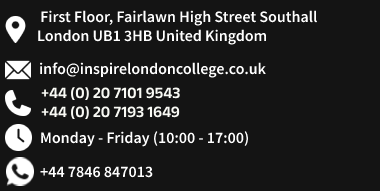Phlebotomy comes from the Greek word parts’ phlebo’ (blood vessels or vein) and ‘tomy’ (to cut into or make an incision). The term venipuncture also refers to the collection of blood from vessels. Venipuncture is an invasive procedure because entry into the human body is necessary to obtain the blood or body specimen. So, what does Phlebotomy means? Phlebotomy describes the process of drawing blood to diagnose the medical condition, blood donation, or implementing therapy.
Historically, venipuncture was regularly used to implement a treatment known as bloodletting (removing blood to prevent or cure an illness). The intention of bloodletting was much different from that of modern Phlebotomy. Bloodletting employed venipuncture as a therapy for illness, not as a diagnostic tool to determine the cause of illness.
Have you ever thought about the history of Phlebotomy?
The art of bloodletting can be traced back to the human history at least 2,500 years and was not limited to any one particular culture or geographical location. Various tools have been used for bloodletting, including shark’s teeth, stingray spines, ropes made with thorns, sharpened bones, and obsidian blades were used to pierce a person’s flesh. Many cultures have also used fire cupping to pull blood from the body by creating a vacuum seal between the skin and the lip of a heated wooden or glass cup.
Various physicians and philosophers have contributed to developing the phlebotomy procedures which we practice today. For example, French physician Jean-Baptiste Denis lived from 1643 to 1704. He served as royal physician to Louis XIV and made his mark on history by performing the first recorded human blood transfusion on June 15, 1667. A 15-year-old boy had undergone an excessive bloodletting process with leeches. Denis transfused 12 ounces of sheep’s blood into the young man, who survived the procedure, thus paving the way for modern blood transfusions.
James Blundell (1791–1878) is known for performing the first human-to-human blood transfusion. Karl Landsteiner (1868–1943) presented the classification of blood groups in the 1900s, creating a safer process for transfusing blood by matching the blood types A, B, or O. Further, German-born doctor Richard Lewisohn (1875–1961) created a system of blood storage that led to today’s blood banks.
Phlebotomy Procedure
The most common reason for Phlebotomy now is for diagnostic purposes. The procedure of Phlebotomy starts from the equipment and tray preparation. Then, the phlebotomist meets the patient and ask for medical history, record and prepare them. After preparations are complete, the patient is asked to lay down or sit in a proper position as required. Then, the phlebotomist locates the vein and inserts the needle after disinfecting the site. The blood is then drawn and prepared for transportation. Lastly, the phlebotomist cleans the site.
Hand hygiene and disinfecting equipment are necessary to avoid contamination. The World Health Organisation defines the best practice in Phlebotomy and blood collection, which must be followed to prevent risk and unsafe phlebotomy procedures.
Phlebotomy jobs in the UK
Phlebotomy can be a great choice as a career. It takes very little time and money for training, but it is a rewarding job. Phlebotomy is an entry-level job in the healthcare industry, but it can be a successful and lifelong career. Phlebotomist has many opportunities as they are heavily needed. For example, busy hospital across the country needs several phlebotomists all the time. A phlebotomist can work as a part of a team with doctors, lab techs, and more. Apart from hospitals, phlebotomists can work in diagnostic laboratories, ambulatory healthcare services, offices of physicians, and outpatient care centers.
Being an entry-level job, you cannot expect to make a fortune from Phlebotomy, but you can earn a comfortable salary, better than many other entry-level jobs. Adzuna, a job search engine, estimated that phlebotomy wages are £30,000 to £35000 per year. In addition to this, the phlebotomist job is flexible. For example, hospitals may require you to work overnight, but private clinics and labs open for standard business hours.
Getting a phlebotomist job will help you gain experience in the healthcare industry and open doors for career advancement. You can become a supervisor of the phlebotomist team, obviously with the pay increase. Getting different pieces of training and certifications can also be helpful to get a pay increase.
How to get Phlebotomy Certificates?
Certified phlebotomist with hands-on experience has a greater chance of getting hired and getting a higher salary than a non-certified phlebotomist. If you are looking for Phlebotomy Training Courses in London then, Inspire Medical, a known training provider for its standard and quality phlebotomy training, provides phlebotomy training and opportunities for hands-on experience.


